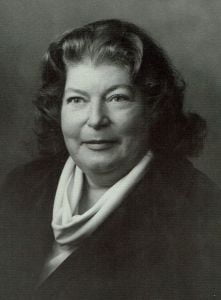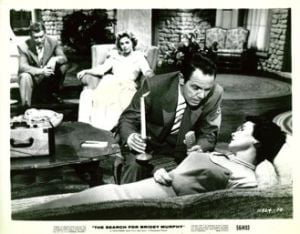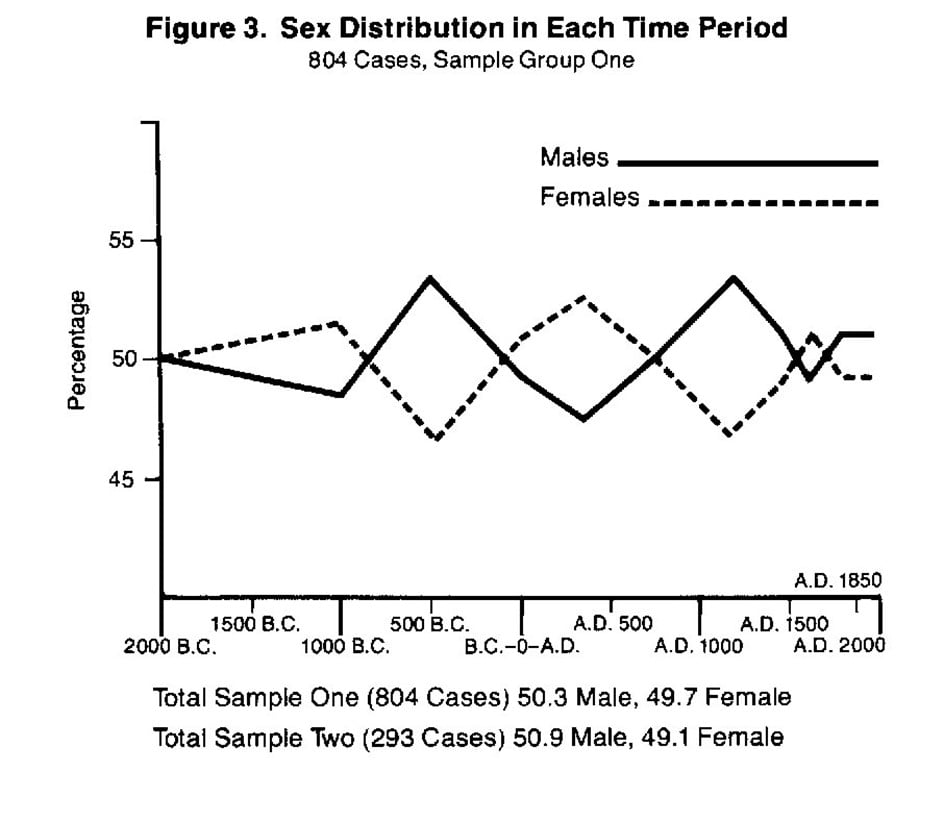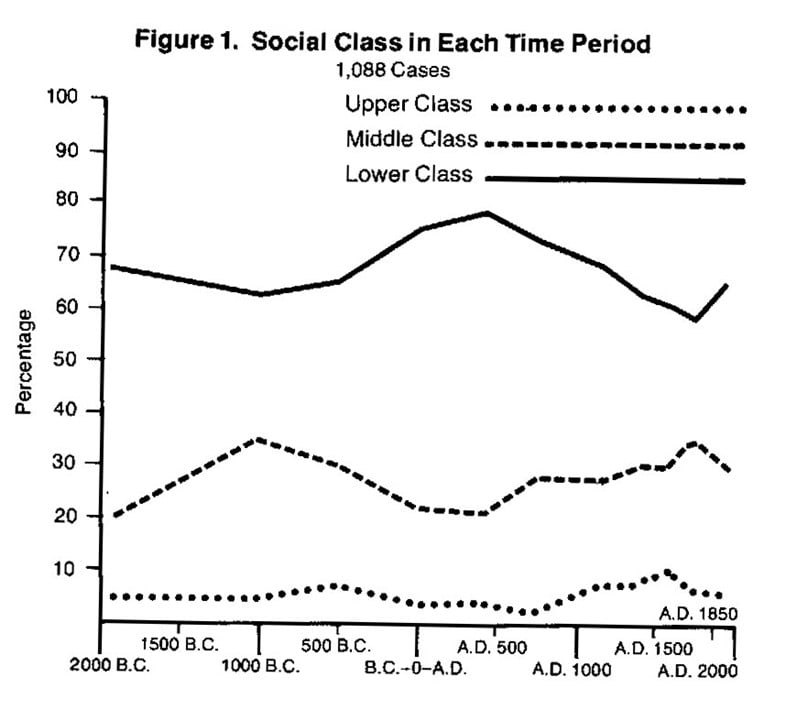 by David Pye
by David Pye
Abstract—In this article, David Pye begins in an engaging style by introducing his own journey of curiosity around the notions of life, death and the afterlife and how his encounter with the work of Dr Helen Wambach further illuminated his ideas. David then explains the prevailing culture within which Dr Wambach’s work was embedded before explaining the research methodologies she developed as she sought to understand whether or not past life memories were merely fantasies or had a basis in reality. The article then progresses towards Helen’s findings via an interesting selection of research participants descriptions associated with her specific questioning techniques, and historical graphs, before sharing Dr Wambach’s ultimate conclusions that past life memories are facts not fictions.
Introduction
As a child growing up in the 1950’s I was like many other boys seeking some kind of adventure, so I joined the boy scouts. Our scout hut was the church hall and part of the deal of joining was an expectation to attend Sunday school. This I duly did and was surprised to be told that we all go to heaven when we die. Even at my young age this seemed rather strange as I surmised that this meant that heaven must be absolutely full with all the billions and billions of people that had died and gone to heaven. Even more packed out if we include all the pets that apparently also join us in heaven. How does God keep a handle on all these dead people and what do they do all day, especially as they seemed destined to live up in heaven forever? It seemed to me that it must get pretty boring up there! It also seemed very unfair that some people lived long happy lives on earth, whilst others suffered under famine and war or died at a very young age. None of it made much sense.
I sought an answer from my Sunday school teacher who could only tell me that “God moved in mysterious ways” but he had a plan for everyone so it would all work out. That of course was a remarkably unconvincing answer, but it was the best I could get.
It was some years later that I happened on a book about Buddhism and the concept of reincarnation. “Ah”, I thought, “This makes far more sense”. Humans die, their souls go to heaven, and are reborn again to live another life. The recycling of souls appeared to be a very efficient mechanism and evened out all the inequalities in the world.
Bad people get reborn into lives of suffering as a punishment whereas good people get to be reborn into happy lives as a reward. A satisfactory concept all round, I concluded.
To be honest though, reincarnation still seemed to involve a lot of suffering, even folks who live apparently happy lives still have a fair share of worry and stress. “There must be more to this”, I pondered thoughtfully. Buddhism does explain that the aim is to get off this continuous cycle of death and rebirth through meditation practise and to ultimately reach a state of Samadhi where you no longer get reborn. “What happens then?” I wondered. Do souls just hang around for ever in this Samadhi state in some Buddhist heaven? Also, what happens when people die, are their souls shoved straight back down into a baby? Who decides whether you have been a good bunny or a bad bunny? There were still many unanswered questions.
Over the following years I read many books on the topic of death. I particularly liked the spiritualist approach where dead people would communicate through mediums and say what a splendid place, they were in. The dead lived in houses the same as on earth, but everywhere was clean and perfect, and if they wanted anything they could, with a bit of effort, just visualise it and it would appear. They also had lots of other friends and family members who had passed over to keep them company and everyone was exceptionally friendly. This all sounded rather nice I thought.
 It was in the late 1970’s that I came across two books by Dr Helen Wambach. Both published in 1979 ‘Reliving Past Lives’ and ‘Life Before Life.’ These two books were a complete game changer for me and for the first time I felt I had an understanding around the mechanism of reincarnation.
It was in the late 1970’s that I came across two books by Dr Helen Wambach. Both published in 1979 ‘Reliving Past Lives’ and ‘Life Before Life.’ These two books were a complete game changer for me and for the first time I felt I had an understanding around the mechanism of reincarnation.
Allow me to explain what is so different and so ground-breaking about Dr Wambach’s research and her unique approach to the topic. But first we need to consider the environment in which Dr Wambach started her research.
Background Environment of Dr Wambach’s Work
Back in 1950’s America there was a spectacular case of reincarnation which seemed to excite the nation. In 1952 US Housewife Virginia Tighe was hypnotically regressed by amateur hypnotist Morey Bernstein. Virginia was taken back to her childhood, then back through her birth and death to what appeared to be a previous life. This past life was as Bridey Murphy in Cork, Ireland during 1798 to 1864.
 Under hypnosis, Virginia revealed many facts about her life as Bridey which were later verified by investigations in Ireland. A vast amount of information was found, and it was claimed as ‘proof’ of reincarnation. Virginia had never left the US and had certainly not been to Ireland. Bernstein wrote a book called ‘The Search for Bridey Murphy’ (1956) which was later made into a film by Paramount Pictures (Langley, 1956).
Under hypnosis, Virginia revealed many facts about her life as Bridey which were later verified by investigations in Ireland. A vast amount of information was found, and it was claimed as ‘proof’ of reincarnation. Virginia had never left the US and had certainly not been to Ireland. Bernstein wrote a book called ‘The Search for Bridey Murphy’ (1956) which was later made into a film by Paramount Pictures (Langley, 1956).
The excitement was so great that even Bridie Murphy songs and dances were created. Eventually certain newspapers dispatched investigators over to Ireland to check the details. It was soon found that certain key ‘facts’ which emerged via hypnosis, including that Bridey was the daughter of a doctor, were not true. Bridey was actually a servant. Other claims were also unfounded, such as the church where Virginia stated she was married (as Bridey) did not exist. But what really put doubt into the case was the discovery that when she was 5 years old Virginia had a neighbour who was an Irish Immigrant, and her name was Bridey Murphy.
It was quickly concluded that little Virginia had heard stories told by Bridey and had incorporated them into her own memory. A process known as Cryptomnesia which is defined as: “A memory that has been forgotten and then returns without being recognized as such by the subject, who believes it is something new and original” (Porge, 2018, p.1). As a result, the whole Bridey Murphy proof of reincarnation story was debunked. The reason I cite this case is to inform the reader of the type of environment that Dr Wambach was in when starting her research, and why she wanted to find out if past lives were fantasy or real. I will briefly summarise some of Dr Wambach’s findings, as reported in her two books, below.
The Research
Dr Wambach was a clinical psychologist at JFK university in California. The research into past lives she engaged in was not funded by the university but was self-funded by Dr Wambach. She approached her research into past life regression on the assumption that it was probably fantasy – not deliberately made up with the intention of deceiving but created by an obliging mind eager to answer questions under hypnosis. Adopting an open-minded but sceptical stance she decided that a standard procedure and standard questions could be formulated and adopted to readily expose fantasy past lives. In an attempt to avoid the pitfalls of an individual hypnotic regression, as in the case of Virginia Tighe, she created a protocol of group hypnosis which involved taking several people at once back into their past lives.
She reasoned that if the phenomenon of past life memory retrieval was fantasy then a past life would be more likely to be:
- A famous or interesting life (who wants to recall a life slaving in the fields all day, more likely to be Napoleon or an Egyptian Pharaoh)
- More upper class than lower class (similar reasons to above)
- More male lives than female (males had more freedom and opportunities in the past than women)
- Time periods familiar to the subject (wild west, gangsters, or other lives derived from films and books)
- Population changes in time periods not reflected in lives reported (as noted by Wambach (1979b, p.138) world population was fairly steady for thousands of years up to 25AD, began to rise sharply from 1200AD, quadrupled in the 1800’s, then accelerated rapidly to its present level of 7 billion)
Method
As noted above, the method chosen to investigate was not by individual hypnotic regressions but by group regressions with up to 30 subjects at a time. Subjects brought cushions or mats to lie on and Dr Wambach talked the group through a regression. To aid analysis, subjects were hypnotically regressed and guided to choose a past life from a selection of time periods, such as 2000BC, 500BC, 25AD, 1200AD, 1500AD or 1850AD. Subjects were then asked a series of questions and told they will remember the answers on waking and be able to complete a special answer form.
Three separate regression sessions were undertaken with an identical procedure for every group to allow for research rigour in terms of reproducibility of the approach and the data. It should be remembered that there were no computers available to help assess and correlate the data. It was all tediously interrogated and statistically analysed. The funding of the research was helped by charging each participant who attended the workshops a small fee. By all accounts there was no shortage of subjects willing to take part.
Questions
The questions chosen were quite detailed and included: the type of clothes worn, utensils used for eating food, diet, skin colour, gender, money, social class, date and type of death. Subjects were also asked to recall their death experience. Further questions were asked on what happens in between lives, how is the current life chosen, who helps decide, why this life, why this time period and what is the purpose. Also the birth experience into their present life, and at what point did they connect with the foetus. Lastly, questions were asked as to whether people in their present lives were known to them from previous lives. As a consequence of Dr Wambach telling the research participants under hypnosis that they would be able to answer the questions she got very detailed answers at the end of the sessions.
Results
The data sheets completed at the end of each session revealed some fascinating results, an example from ‘Life Before Life’ (Wambach, 1979a, p.28) is evidenced below:
Yes, I chose to be born. Someone did help me choose and it seemed to be some voice that I trusted greatly. It was kind, helpful and wise, very wise. My feelings about the prospect of being born were very positive. When you asked the purpose for this lifetime, it flashed that I was to broaden people’s minds.
I chose this time period to be born because it is a great period of change where people need stability within themselves. I am supposed to help them somehow. I did choose to become a male, because it is good for my work, and I enjoy that role. My mother was my wife in a past life, my father was my son. I got some faint flashes of mates or lovers, but nothing clear. As to children and other relatives, I felt uncertain except for one uncle who came through clearly as someone I knew before. I did have many friends from past lives.
I attached to the foetus when I decided to meet it in the womb of my mother just before birth. The feelings of my mother were very positive and loving and warm. When you asked for the birth experience, I felt odd, tingling sensations around a fleshy ball that was me. My impression after birth was one of happiness and the doctor seemed pleased and my mother was very happy. I feel that this lifetime feels very good and positive for me and I feel a burst of energy and a purpose after this session.
There are many more examples from Life Before Life, the one below (Wambach, 1979a, p.37) is an example of someone who was reluctant to be born:
No, I didn’t choose to be born, I was instructed to return. It seemed to me that I just followed instructions (don’t know who was instructing). I felt no rebellion, just that it was not really my choosing. I was quite apprehensive about living the coming lifetime.
One of the purposes for this lifetime seemed to be to teach and to minister to mankind and to work on the development of the greater use of the mind to ultimately teach. I chose this time period because somehow the psychology field flashed into my mind, and I felt that psychology was moving too slowly and hampering the spiritual development of mankind. I didn’t seem to have chosen my sex. My mother had been my sister in a past life where we fought all the time. My father had been my grandfather in another lifetime. My husband was a Sioux Indian when I was a French padre, and I didn’t like him then either!
I seemed to have an attachment to the foetus from the inception, but this is vague. My mother was very happy. In the birth-canal experience, I started to hold my breath and then breathe very heavily. After birth, I was mostly aware of being happy to be in a wanted situation. This has been a very enlightening hypnotic experience as I have had the feeling since my earliest memories that I was here for a reason and have had some interesting mental talents develop.
Fact or Fantasy
So, is this fantasy? We said above that if it was fantasy, we would expect more male lives than female, because males had more freedom and opportunities in the past than women. What Helen found was that out of 1,100 past lives recorded at the time of publication the split overall was 50.3% male and 49.7% female, exactly what you would expect if they were genuine past lives; as evidenced in the following diagram (Wambach, 1979b, p.124).

We also said above that if the past life memories were merely fantasies, then we would expect more upper class lives rather than lower class lives – on the grounds that who wants to recall a fantasy life slaving in the fields all day, when the psyche could allow the fantasy of being someone like Napoleon or an Egyptian Pharaoh, or at least someone with money and opportunity. It was straightforward to tell what class people were in from the detailed descriptions given after the group hypnosis sessions.
Helen found that over 70% of the 1,100 lives were lower class with around 20% middle class and under 10% upper class. Which, again, is exactly what you would expect from historical evidence; as shown in the following diagram (Wambach, 1979b, p.115).

A similar pattern occurred with population spread, with the majority reporting lives in the more populated time periods from 1500 upwards and less in the low population time periods. Again, the graph she produced mimicked the historical population spread. There were other correlations associated with clothing, utensils, skin colour, and so on, which all tied up convincingly with historical fact. So for all intents and purposes, these lives appear not to be fantasy, but to represent genuine past lives! In Dr Wambach’s own words: “All the data described…tended to support the hypothesis that past life recall accurately reflects the real past rather than it represents common fantasies. None of the data indicated that fantasy was at work” (Wambach, 1979b, p.146).
The Death Experience
One of the most important findings in the research conducted by Dr Wambach is in terms of the of the death experience. Despite our modern society treating death as if it is something to fear, the research indicated the complete opposite to this – death is a great release and a returning home. When hypnotically regressed to a past life the research subjects were asked to recall their death and remember the feelings they had (without any associated pain). 85% of study participants had very positive experiences. A typical reported experience is noted below from ‘Reliving Past Lives’:
Dying was like being released, like going home again. It was as though a great burden had been lifted when I left my body and floated up towards the light. I felt affection for the body I had occupied in this lifetime, but it was so good to be free (Wambach, 1979b, p.140).
The 15% that reported not so positive death experiences were those who had died in childbirth or had undergone violent deaths. Dr Wambach reports on the comments of a subject who died in childbirth:
I feel so bad because I’m leaving my two children behind…I worry about who will take care of them, and I stay around my body trying to comfort my husband (Wambach, 1979b, pp.141-142).
Another kind of disturbing experience at death was that of being killed accidentally or violently, usually at a young age. One subject said:
I was hit by a car while I was running across the street… I seemed to continue running across the street and wasn’t really aware that I was dead. Then I felt very frustrated and lost, because I didn’t understand what was happening to me. Finally, I was in a place of darkness, and then I saw a bright light. Then I went soaring up through the darkness toward the light (Wambach, 1979b, p.142).
Some subjects who expressed negative feelings at death were fighting in a war:
I was fighting and then my body crumpled. I kept on fighting, but I couldn’t seem to affect anything going on around me. I was still on the battlefield, but then I seemed to be joined by others who had died. I couldn’t seem to leave that scene (Wambach, 1979b, p.142).
Other subjects experienced sorrow because of others’ grief at their death. The sorrow was not for themselves but for the people who remained on earth. About 25% reported a brief period of darkness followed by light. More subjects, about two thirds, experienced soaring up high above their body into a light-filled world, where they were greeted by others and had an instant sense of companionship. One subject reported:
I soared up high in the sky after I left my body. I didn’t want to look back. I seemed, then, to be surrounded by others, who were congratulating me in that lifetime. I felt a sense of homecoming and great joy. There was life all around me (Wambach, 1979b, p.142).
We can see from the above that there is nothing to fear about death. In fact, if anything, it’s a welcome release from a life well lived. Interestingly Dr Wambach found very few suicides in her research and those she did find reported a realisation that suicide was not a way out of their problems no matter how bad it might have seemed. Not taking your own life is a test of resilience and it seems that if a person does commit suicide then there is little option but to come back in a new life and start over again. After all, this life was chosen to be able to learn and overcome difficulties and there are no shortcuts.
Research Conclusions and Concluding Comments
There are several conclusions we can draw from the research:
- The research shows that what was being reported did not appear to be fantasy
- Although not reported here, the research method has been shown to be repeatable with different hypnotists and different groups. By the time of Dr Wambach’s death in 1985 she had collected over 6,000 reports
- We choose or were guided to choose our present lives
- The birth experience is traumatic and the majority of ‘souls’ enter the foetus just before birth
- We incarnate with people we have known from past lives
- We have had many past lives some of which might appear quite dull and laborious but there are always relationships to work out and goals to be achieved in every lifetime
- There is nothing to fear about death. When death occurs, it is a great release, a return to our true home and a reunion with all the people we know
We can conclude that there appears to be a mechanism and a grand plan for life on earth. We are incarnated here as souls in a physical body. Our reasons for being here are to learn, experience and achieve certain lessons and objectives that will add to the greater knowledge of our souls. We are helped in this process by incarnating with souls we have known from previous lives. When we die it is a great release and our souls return to a spirit realm where we can recuperate and take stock of the experience and share that experience with other souls. Once rested we can plan our next incarnation. Each life lived adds to our soul’s growth and as a consequence all the experiences of all the billions of lives lived adds to the greater knowledge of the universe.
In this article I hope to have gone some way towards doing justice to Dr Wambach’s pioneering research and her excellent and informative books. I also hope to have re-ignited interest about Helen’s body of work which may now be sadly forgotten; and perhaps even inspired and encouraged the reader to delve more deeply into her findings. I must tell the reader that sadly both books went out of print in the late 1990’s but I am happy to relate that following campaigning by myself and others they are now back in print, as of 2020, with White Crow books as the new publisher.
Biography— David Pye lives near Glastonbury in Somerset. He encountered the work of Dr Helen Wambach several years ago and regards it of such high importance that he set up a website dedicated to her pioneering work (See http://reincarnation.me.uk). He also gives talks about death and reincarnation which include Dr Wambach’s ground-breaking research. David spent 20 years as a research scientist and is currently an IT consultant. He also holds a Master’s degree in digital media production. Over the last 20 years David has set up several UK companies, and successful local charities which specialise in energy efficiency and organic gardening. David is a member of the council of the International Vegetarian Union where he serves as treasurer, he is also a Fellow of the UK Vegetarian Society where he served as their Chair for several years. His particular area of interest is the environmental aspect of vegetarianism and he has spoken at several international congresses on this topic.
References
Bernstein, M. (1956). The search for Bridey Murphy. London: Hutchinson.
Langley, N. (Director). (1956). The search for Bridey Murphy. [Film]. Paramount Pictures. https://www.youtube.com/watch?v=xJHD8fY3PlE
Porge, E. (2018). Cryptomnesia. Encyclopedia.com. https://www.encyclopedia.com/philosophy-and-religion/other-religious-beliefs-and-general-terms/miscellaneous-religion/cryptomnesia
Wambach, H. (1979a). Life before Life. UK: Bantam books.
Wambach, H. (1979b). Reliving past lives: The evidence under hypnosis. UK: Hutchinson Books.
